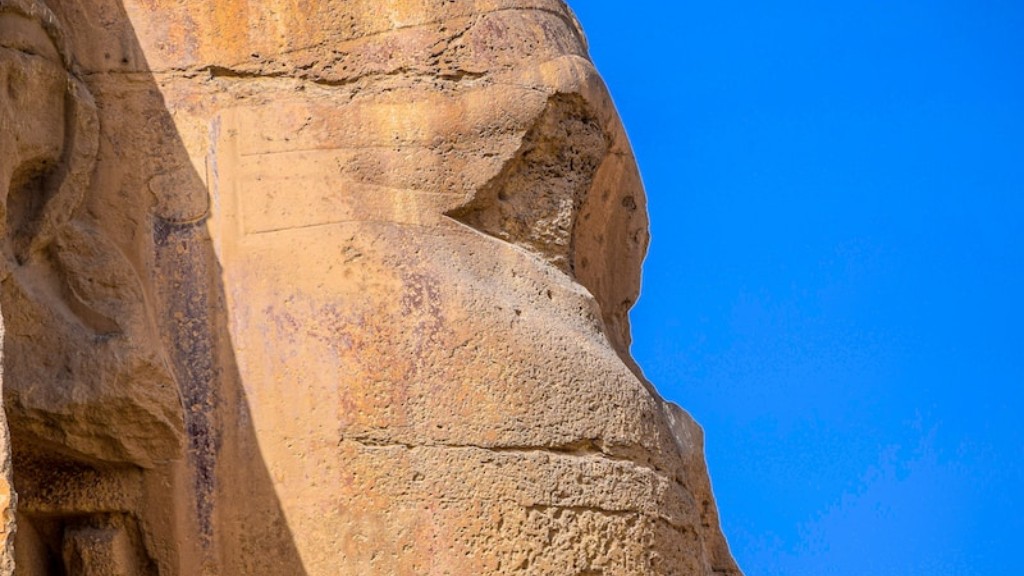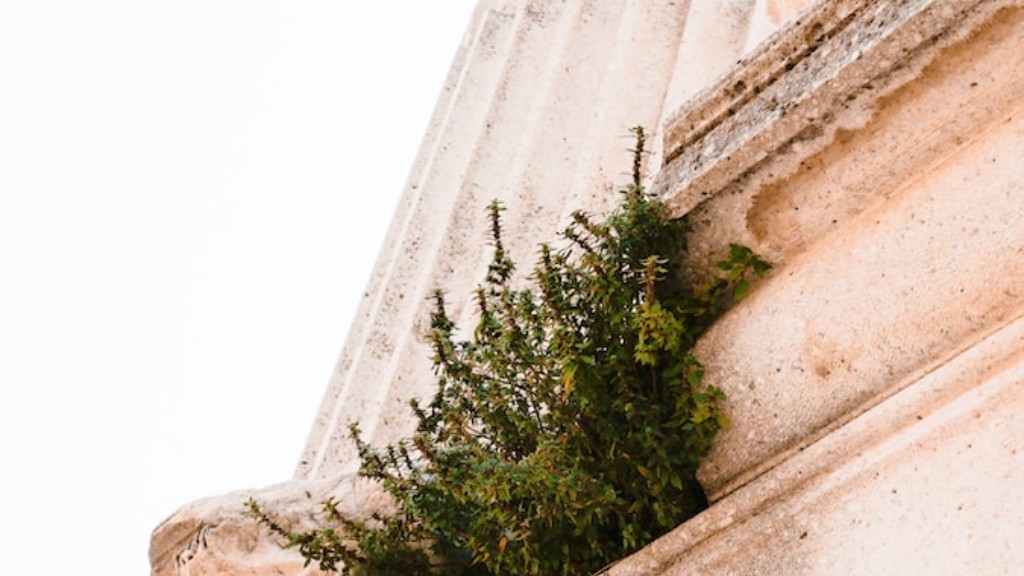Cut & Style
Women in Ancient Egypt lived a typical life of a woman in their society, from fashion to fertility. Clothing for women was quite elaborate. The more wealth a woman had, the more fabrics she was able to afford. Women wore long and flowing linen dresses that went over one shoulder and were held up with two colorful girdles, one of which was a wide beaded one that went around the waist.
Ancient Egyptian adornments ranged from simple items, such as armlets, necklaces and rings, to full-length ornate headdresses. Ancient Egyptian women often wore strings of beads, necklaces, earrings, anklets, pendants and rings on their arms and in their hair. All jewelry for Ancient Egyptian women was detailed and brightly decorated with painted glass, turquoise, jasper, and other stones.
Ancient Egyptian women also had a habit of plastering their faces with tan-colored makeup to give themselves a more attractive and healthy complexion. Ancient Egyptians wore several pieces of clothing and viewed linen as a symbol of purity in the hot and dry climate. They preferred white linen, though sometimes other colors were added in the form of tinted-glass beads, colored inlays, or embroidery.
Materials & Costs
Linen was a popular choice for women’s clothing in Ancient Egypt, as it was lightweight and cool, and dyed fabrics used for embroidery were made of wool, cotton and plant fibers such as flax and papyrus. Other rarities from which clothing was manufactured included tortoiseshell, ivory, gold, precious gems and metals.
The cost of clothing also varied depending on a woman’s wealth and station in life. Upper-class and privileged women often had access to expensive and imported fabrics while the lower class likely had to make their own clothing with more affordable materials.
Though the items were more expensive, craftsmanship was also valued. Egypt had highly developed methods of decoration, and during the late period in history, embroidery and jewelry pieces were of a very high standard. Personal clothing and jewelry was extremely important in Ancient Egypt, as it was a sign of social status and was believed to give prestige and respect to its wearer.
Formal Events and Occasions
Women wore elaborate dresses for formal occasions. The trendiest items in the first millennium BC were square-cut, undecorated linen tunics with long sleeves. Married women wore their hair tied up away from their faces. Younger women, unmarried, and slave women often wore their hair in a braid.
For formal processions and festivals, women often wore a dress with the sash or belt at the waist, a diaphanous, pleated linen overskirt, and a protective clothing that is an example of an Egyptian overdress that was referred to as a volumen.
Women sometimes wore wigs that were made of real human hair or animal hair. These wigs were especially useful for royal women who had to keep their heads shaved for political reasons. Wigs were always styled to look like their natural hair and were often decorated with gold or other precious ornaments.
Areas of Work & Activities
Ancient Egyptian women wore lightweight clothing because the weather conditions were hot and humid. Women who worked in fields wore loincloths like the men. Women from the lower classes usually wore shorter dresses than those from the upper classes. In addition to dress, Ancient Egyptian women also wore aprons, bibs, and assorted head coverings to protect them from the sun.
Women in Ancient Egypt did a lot of work in the fields, as well as in domestic and craft tasks. Men worked in the royal court, in government, and in the military, while women were mainly responsible for running households and taking care of the children. Women, however, were the main laborers in agriculture and fishing, and could work as scribes or even as priests.
Female workers in Ancient Egypt were generally well respected and often held positions of responsibility. For example, women served in medical roles, and many of the great female rulers of Egypt were highly respected and had their names recorded in history.
Fertility & Fashion
Fertility and fashion was important for Ancient Egyptian women. Fertility was linked to fashion a lot. Ancient Egyptian women would often wear cosmetics and jewelry to help them look more beautiful and attractive. To promote fertility, women would wear necklaces that were shaped like eggs, and they would decorate their bodies with symbols associated with fertility, such as horns and cows’ heads.
The clothing of Ancient Egyptian women was also often adorned with symbols of fertility, such as the cobra, the frog, and the scarab. Wearing the symbols of fertility was seen as a way to ensure a good harvest and the health of the family.
For many women in Ancient Egypt, jewelry was a sign of status and wealth. Jewelry often set apart the wealthy and powerful from the average citizens. In fact, jewelry served in Ancient Egypt as a form of identification and protection, as it was thought to ward off evil spirits.
Clothing in the Tomb
Ancient Egyptians were very conscious of their appearance and so richly decorated clothing was often found in tombs. The clothes that were found in tombs often show intricate detail and were of an extremely high quality. It is thought that these clothes were intended for the gods to admire.
Clothes from tombs also give us an insight into the clothing of Ancient Egyptian women as many of the garments that have been preserved indicate that women had longer clothing than men. This is believed to be a sign of modesty and respect. The lengths of the garments, however, would vary depending on the woman’s status in society, and the wealthier classes would often wear longer and more brightly decorated clothes.
Ancient Egyptian clothing was much more than just a functional item. It was used as another way to express one’s identity in society and to show off one’s wealth and status. By looking at the colorful clothes and jewelry that have been found in tombs we can get a better understanding of the people who once lived in Ancient Egypt.
Social Significance
Clothing was of immense significance in Ancient Egypt. It was a reflection of the social classes and a way for people to express their own individual styles. It was also a sign of respect and humility. Clothing was an important factor in Ancient Egyptian society and was carefully considered to ensure it was appropriate.
The colors and patterns of the clothing also represented the inhabitants of Ancient Egypt. Bright colors were favored by wealthy and powerful women to display their power, while commoners typically chose simple, earthy colors. Women of the upper class often had servants who were devoted solely to embroidering ‘status’ symbols on the garments, to further display the importance of the wearer.
The role of clothing in Ancient Egypt was also closely linked to religious beliefs. Ancient Egyptians believed that certain colors and symbols had spiritual and magical significance and could protect the wearer from illness and danger. Many gods were depicted wearing different kinds of clothing, and clothing styles could even be mistaken for gods.
The Legacy
The clothing of Ancient Egyptians was closely tied to religious beliefs and plays an important role in understanding their culture. Although Ancient Egyptians are no longer around, their legacy lives on in their fashion and the elements of their clothing have become part of modern fashion. Items like linen tunics, beaded jewelry, and volumens are still seen in some modern-day fashion and have adapted with the changing times.
Ancient Egyptian clothing is a testament to the craftsmanship, artistic skill and attention to detail of the inhabitants of Ancient Egypt. It is a reminder of the ingenuity of the people who lived in this region and of their commitment to creating something durable and beautiful.
Conclusion of Meaning
Clothing was an integral part of Ancient Egyptian culture. It not only served the practical purpose of providing protection and modesty but also had a great deal of social and religious significance. Ancient Egyptians placed a great deal of importance on clothing, and many of the elements of their fashion have been carried on by modern fashion. From linen tunics and jewelry to overdresses and wigs, ancient Egyptian clothing has left its mark in the fashion world.





